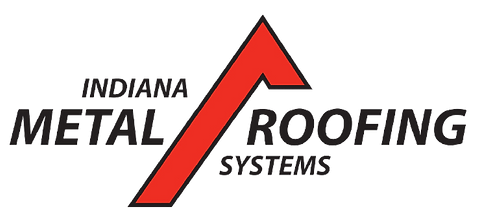Maintaining the condition and appearance of your roof is essential for the longevity and value of your home. Algae stains, especially in humid climates, can detract from your roof’s aesthetic and reduce its lifespan. Fortunately, with the right approach, you can effectively remove and prevent these stains. At Indiana Metal Roofing Systems, we understand the importance of preserving your roof’s appearance and durability. Let’s dive into the key steps for removing and preventing algae stains.

What Causes Algae on Roofs?
Algae, often seen as black streaks or patches, thrive in damp and shaded areas. They are common in humid environments where moisture lingers. Over time, algae growth can damage your roofing materials by retaining moisture, which can speed up the deterioration process. Did you know? Algae are more common on asphalt shingles due to their limestone content, which algae feed on. Preventing algae from taking root is crucial to extending your roof's life.
1. How to Remove Existing Algae Stains
To restore your roof’s appearance, follow these steps to remove algae:
Cleaning Solution: Start by using a cleaning solution specifically designed to treat algae on roofs. A common mixture is a 50:50 solution of water and bleach. Apply the solution using a garden sprayer, allowing it to sit for about 15-20 minutes.
Rinse Thoroughly: After letting the solution work, rinse the roof with low-pressure water. Avoid high-pressure washing as it can damage the shingles.
Manual Cleaning: For stubborn areas, use a soft brush to gently scrub the algae off.
2. How to Prevent Algae Growth in the Future
To avoid algae from returning, consider implementing these preventative measures:
Copper or Zinc Strips: Installing copper or zinc strips along the ridgeline can help prevent algae growth. When rainwater flows over the strips, ions are released, which are toxic to algae.
Trim Overhanging Trees: Algae thrive in shaded, damp areas. By trimming back overhanging branches, you can increase sunlight exposure, helping to dry out moisture more quickly.
Algae-Resistant Shingles: If you're considering replacing your roof, choose algae-resistant shingles. These contain copper granules designed to inhibit algae growth over time.
Expert Tip: Ventilation and Roof Maintenance
Proper ventilation is key to preventing moisture buildup in your attic, which can promote algae growth. Ensuring that your roof and attic are well-ventilated can go a long way in keeping your roof free from algae. Additionally, regular roof maintenance, such as cleaning gutters and inspecting shingles, can prevent algae from gaining a foothold.
Algae Prevention Products
There are several products available to homeowners looking for long-term solutions:
Algae-Resistant Coatings: These coatings can be applied to your roof to create a protective barrier against algae growth.
Professional Cleaning Services: For those uncomfortable with DIY solutions, professional roof cleaners can provide algae removal and prevention services tailored to your roof's material.
Fact: Algae typically grow on the north side of the roof, where there is less sunlight. Understanding this can help homeowners focus their prevention efforts on specific areas.
Indiana Metal Roofing Systems' Expertise
At Indiana Metal Roofing Systems, we specialize in using the best materials and techniques to ensure your roof stays in top condition. Whether you’re looking for algae prevention solutions or a complete roof replacement, our experienced team in Fort Wayne, IN, can assist you. With an A+ BBB rating and a 5-star Google rating, we pride ourselves on delivering unmatched craftsmanship and customer satisfaction.
Frequently Asked Questions
1. Can I use a power washer to remove algae?It's not recommended to use a high-pressure washer as it can damage shingles. Opt for low-pressure rinsing.
2. How often should I clean my roof to prevent algae?Regular cleaning every 1-2 years can help prevent algae buildup, especially in humid climates.
3. Are algae-resistant shingles worth the investment?Yes, algae-resistant shingles offer long-term protection against growth and can extend your roof’s life.
4. What is the best season to clean a roof?Late spring or early summer, when temperatures are mild and rain is infrequent, is the best time to clean your roof.
5. Can copper or zinc strips prevent all types of roof algae?While these strips are effective, they may not prevent all algae. Routine cleaning and maintenance are still necessary.
Conclusion
Preventing and removing algae stains is vital for both the look and longevity of your roof. By applying simple prevention methods such as installing copper strips, trimming trees, and using algae-resistant materials, you can ensure your roof remains algae-free for years to come.
For more insights into effective roof maintenance, visit this article on visible broken roof shingles.

Comments